A low-power portable meteorological instrument is designed. The meteorological detection system is mainly controlled by low-power MSP430 single-chip microcomputer. It uses temperature sensor, humidity sensor, air pressure sensor, wind speed and wind direction measurement module to carry out temperature, humidity, air pressure, wind speed, Wind direction measurement; real-time display of data through clock chip and 12864 liquid crystal; real-time storage and query of data through E2PROM. The meteorological instrument has the characteristics of miniaturization, real-time, low power consumption and portability. The test results show that the meteorological instrument has the measurement accuracy up to the requirements of ordinary meteorological measurement and has good stability, and is especially suitable for climate monitoring in small areas.
0 Preface
The measurement of meteorological parameters such as temperature, humidity, air pressure, wind speed and wind direction plays an important role in daily life, agriculture, fishery, industry, forestry, navigation, etc. Most of the meteorological parameters in many regions rely on local weather forecasts, but The weather forecast has a wide geographical range and cannot be accurately measured in small areas. The cost of building a meteorological observatory is relatively high, and the cost performance is very low. Therefore, it is necessary to design a compact, portable comprehensive meteorological measuring instrument. Aiming at the above problems, a low-power portable meteorological instrument is designed. The meteorological detection system can effectively measure meteorological parameters such as temperature, humidity, air pressure, wind speed and wind direction in small areas. The accuracy can reach the requirements of ordinary meteorological measurement, and real-time. The functions of display, real-time storage and backtracking query have the characteristics of low power consumption, miniaturization, portability and low cost, and are suitable for meteorological measurement in various small areas, and have certain practical value.
1 system design and working principle
As shown in Figure 1, the meteorological measurement system uses the low-power single-chip MSP430F149 as the core control component, and the temperature measurement module, humidity measurement module, air pressure measurement module, wind speed measurement module, wind direction measurement module, clock module, and E2PROM, liquid crystal display. It consists of modules such as independent buttons.
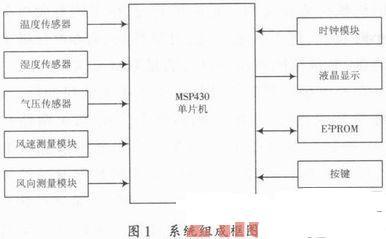
The temperature, humidity, air pressure, wind speed and wind direction are converted into electrical signals by using various sensors, and the measurement data is obtained by the single chip processing, and the time information obtained by each data and the clock chip is displayed on the liquid crystal to realize real-time display of meteorological parameters.
Data storage and query through E2PROM and independent buttons - press the store button to store the current time and data; press the query button to query the previously stored measurement data. At the same time, it also has the function of automatic measurement. When measuring automatically, the LCD is turned off, and the measured data is stored in the E2PROM once every hour.
2 hardware design
2.1 Introduction to MSP430
The MSP430 is a series of ultra low power microprocessors from TI. Its remarkable features are ultra-low power consumption, with 5 low-power modes to choose from, short wake-up time, only 6μs, and powerful processing power, high integration, and rich embedded modules (12-bit A) /D, 16-bit timer, FLASH, etc.), mostly used in portable devices such as smart meters, smart home appliances, battery power supplies. This meteorological instrument adopts MSP430 series MSP430F149 single-chip microcomputer as the main control chip, which not only satisfies the design requirements, but also can directly use the 12-bit A/D and 16-bit timer integrated internally to reduce the peripheral modules, thus improving the system stability. At the same time, the microcontroller can enter the low power mode, effectively reducing system power consumption and saving power.
2.2 Temperature measurement module
Currently commonly used temperature sensors are mainly analog and digital. The analog temperature sensor mainly has PT100, which has high precision and stable performance, and the working temperature is between -200 and 650 °C. However, the temperature measurement circuit composed of PT100 is very complicated, power consumption and cost are large, and ordinary meteorological measurement The accuracy requirement of temperature measurement is not very high. Therefore, this design selects the digital temperature sensor AD7416 which is relatively simple.
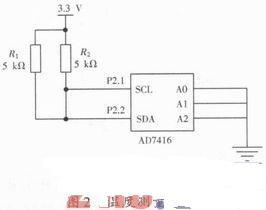
The AD7416 is a multi-function temperature sensor with a 10-bit successive approximation analog-to-digital converter. The typical temperature conversion time is 400μs, the resolution is 0.25°C, and the measurement range is -40~125°C. The lowest power consumption is available. Up to 1.2μW, using I2C bus for data transmission, and with over temperature protection and sampling error mechanism. This sensor is not only suitable for accuracy, but also has a simple circuit and can achieve low power consumption. Temperature measurement circuit shown in Figure 2, the lower 3 bits of the serial bus address A0, A1, A2 are grounded, its serial address is 48H; its data pin SDA and clock pin SCL external pull-up resistor and microcontroller I / The O port is connected, and the control word is written through the I2C bus to control the temperature measurement.
2.3 humidity measurement module
Humidity sensors are mainly divided into two types: capacitive and resistive. The current widely used HS1101 capacitive humidity sensor has good stability, high precision, external protective cover, antistatic, anti-dust and anti-chlorine. , ammonia, etc., the measurable humidity range is 1% ~ 100% RH, the accuracy can reach ± ​​2% RH, in line with the requirements of ordinary meteorological measurements. When the relative humidity changes, the relative capacitance of HS1101 changes. The change of relative capacitance will cause the change of charging and discharging time. Only the relative humidity can be calculated according to the charging and discharging frequency.
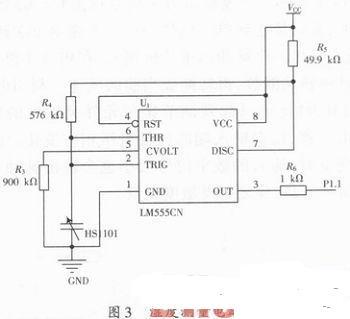
The humidity measurement circuit is shown in Figure 3. The relative humidity measurement is realized by more than 555 resonant circuits. The HS1101 is connected as a capacitor variable between pins 2 and 5 of the TLC555 chip. Pin 7 is used as a short circuit for the resistor R5. HS1101 is charged to the threshold voltage (about 0.67 V) through R3, R4, discharged to the trigger level through R4, then R4 is shorted to ground through 7, the sensor is charged and discharged by different resistors R5, R4, forming a charge and discharge cycle, forming a square wave . The square wave frequency measured by the single chip microcomputer is converted into humidity according to the conversion relationship of HS1101.
2.4 air pressure measurement module
The air pressure sensor adopts the integrated pressure sensor MPX4115 with temperature compensation capability produced by Motorola, USA. This chip has high reliability, economy and applicability, and its output is proportional to the applied pressure. The measuring range is 15~115 kPa. The output voltage range is 0.2 to 4.8 V. The relationship between the MPX4115 output voltage and atmospheric pressure is as follows: Vo≈Vs (P&TImes; 0.009-0.095) (1)
Where: Vs is the supply voltage; P is the atmospheric pressure. The MPX4115 output voltage is sent to the internal A/D of the MSP430 MCU. Since the reference voltage of the internal A/D of the MCU is 2.5 V, which is smaller than the maximum output voltage of the pressure sensor, the output voltage of the MPX4115 is divided by the resistor. After inputting the MCU, according to the formula ( 1), the pressure value is obtained by conversion. The air pressure measurement circuit is shown in Figure 4.
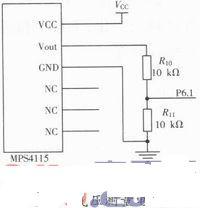
2.5 wind speed measurement module
The wind speed measurement sensor uses CS3144 Hall switch integrated circuit, which is a magnetic field sensitive circuit fabricated by semiconductor integrated circuit technology. It consists of voltage regulator, Hall voltage generator, differential amplifier circuit, Schmitt trigger, temperature. The compensation circuit and the open output of the collector, the input of which is the magnetic field induction intensity, and the output is a digital voltage signal.

In order to measure the wind speed, a three-wind cup type wind speed component is selected, and a small magnetic steel is added to the rotating body of the wind cup. The small magnetic steel has small volume, small mass and strong magnetic steel, and the magnetic field is suitable for being received by the Hall sensor, and is convenient. Shielding other magnetic fields in the environment can also reduce the effect of the mechanical system on the final amount of inductance, making the measurement more accurate. The wind speed measurement circuit is shown in Figure 5. The digital signal is output by the CS3144 and then converted into a pulse by the LM393. Finally, it is transmitted to the I/O port of the MCU. Each time the small magnetic steel turns one turn, a pulse is output. The one-chip computer receives, counts the number of turns per second, and then converts it into the current wind speed. The voltage comparator LM393 can also be used to adjust the sensitivity of the Hall element. The potentiometer is adjusted, and the comparison voltage of the inverting input terminal changes accordingly. When the comparison voltage becomes low, the input digital signal is small and the pulse is output. The sensitivity becomes higher, and vice versa, the sensitivity becomes lower.
2.6 Wind direction measurement module
In order to achieve better measurement results, the supercharged photoelectric encoder CHA3806 is selected for wind direction measurement. The supercharged photoelectric encoder generally outputs three, three, and three pulse signals. The Z signal is mainly used for synchronization or zero adjustment. The B signal contains information such as the direction of rotation and the rate of rotation of the object to be measured. Its mechanical structure is simple compared to the average mechanical life of tens of thousands of hours. It has strong anti-interference ability and high reliability. The resolution of the encoder disc, the measurement range is 0 ° ~ 360 °, to meet the measurement requirements.
A large wind vane is added to the rotating shaft of the photoelectric encoder. When the angle of the wind vane changes, the photoelectric encoder will send a digital pulse signal with a phase difference of 90° between A and B. When the angle is forward rotation, A leads B by 90°, and when reversed, B is ahead of A by 90°. The relationship between the number of digital pulse signals output and the angular displacement is proportional. Therefore, the corresponding angular displacement can be calculated by counting the pulse signals. The wind direction measurement circuit is shown in Figure 6.

The output of the photoelectric encoder A, B is connected to the I/O port of the MCU, and the position of a certain photoelectric encoder is fixed to the north. Each time a position is rotated, A sends a pulse to be received by the MCU. At this time, the MCU will judge B. Whether the pulse is high or low at this time. If B is high level, then the photoelectric encoder is forward rotation and the count is incremented by one; otherwise, the photoelectric encoder encoder is reversed, the count is decremented by 1, and the count is equal to 600, and zero is returned. The same angle less than 0 is from 599. Start subtracting, and the final count value is multiplied by 0.6, thus measuring the wind direction. In order to visually see the wind direction, according to the wind direction representation, 0° is the north, every 22.5° is the same type, which indicates that the north wind, the northeast wind, the northeast wind, the east northeast wind, the east wind, the east east wind, Southeast wind, south east wind, south wind, south southwest wind, southwest wind, west southwest wind, west wind, west northwest wind, northwest wind, northwest wind, the type of wind and the deflection angle are displayed together in liquid crystal display.
2.7 Human Interface Module
Keyboard module: 6 independent buttons, corresponding to observation, query, storage, automatic measurement, up and down six functions. The up and down keys are used to view measured values ​​for different periods in the query function. LCD module: low power consumption 12864 liquid crystal, 3.3 V Power Supply, working current is about 10 mA when the backlight is turned on, and the backlight operating current is less than 1 mA. The current time, temperature, humidity, air pressure, wind speed and wind direction are displayed in real time during the observation; When the measured value and measurement time are recorded in real time, the automatic measurement can be controlled by the single-chip microcomputer to turn off the backlight, reduce power consumption, and achieve low power consumption.
2.8 other hardware modules
System power module: The circuit is shared with 3.3 V, 5 V voltage. Because it is a portable product, it can be powered by a 5 V lithium battery. After entering the system, the 5 V voltage is supplied to the MSP430 microcontroller via the LM1117 3.3 V to obtain 3.3 V.
Clock module: The real-time clock uses the low-power chip DS1302, which can automatically count the seconds, minutes, hours, days, weeks, months, years, and leap years. It expands the perpetual calendar function display, and the power consumption is low. It consumes less than 300 nA and has high precision to meet system requirements.
E2PROM module: Due to the large amount of stored data, the AT24C256 memory with larger storage space and lower cost is selected. This E2PROM has a capacity of 32 KB and is connected to the microcontroller through the I2C bus to store and read data.
Other than thoes normal Wall Charger , Yidashun can produce Other Wall Charger which is not normal. Other wall charger is not standard wall Adapter , It is with special output voltage, output current, and dc connector size is not normal one. However, as we are direct factory of design, manufacture and sales of Power Adapter, we can customized the products according to customers' requests. We can offer other more high voltage wall adapter, such as 29.4V 36V 42V......with different dc connector size. All our adapters with advanced secure technique,with full protection of over voltage,over current,short circult,over temperature. Yidashun Wall Mount Adapter all make in new compact material which can assure you long lifetime use for the power adapter.
What's more, we can also design the wall adapter PCB according to your demands, any OEM&ODM orders are welcome! so if you want to find any wall charger, pls do not hesitate to contact Yidashun, with Yidashun, you will find the correct wall charger you need.
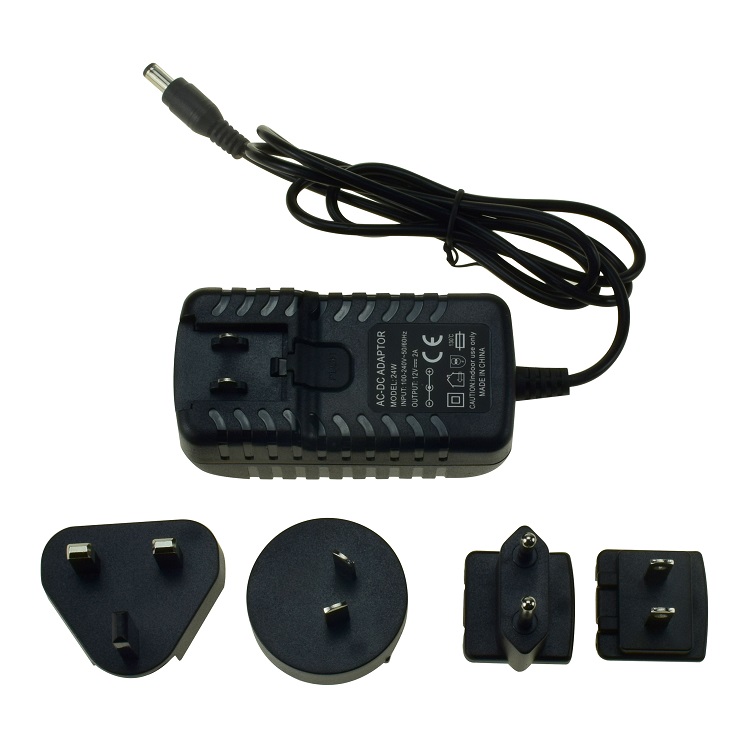
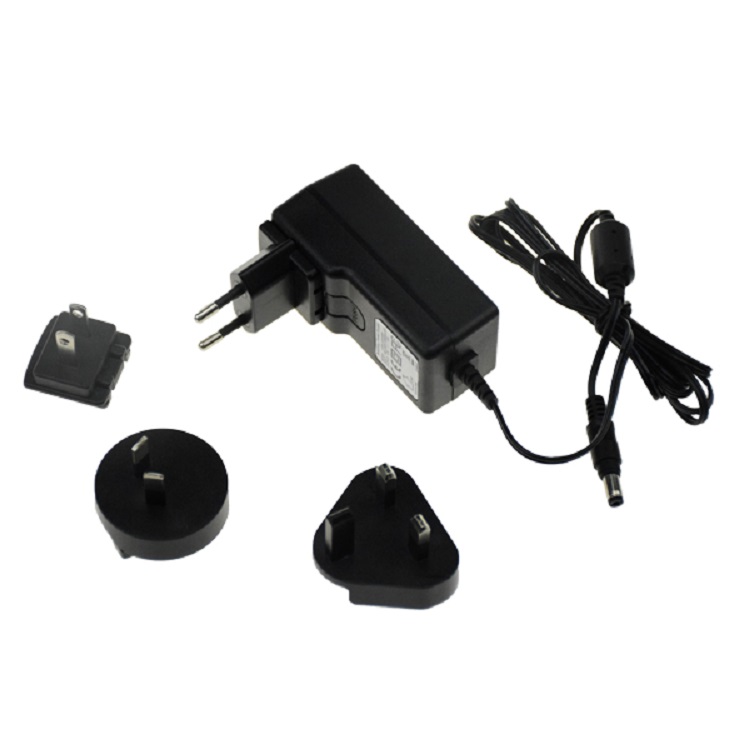
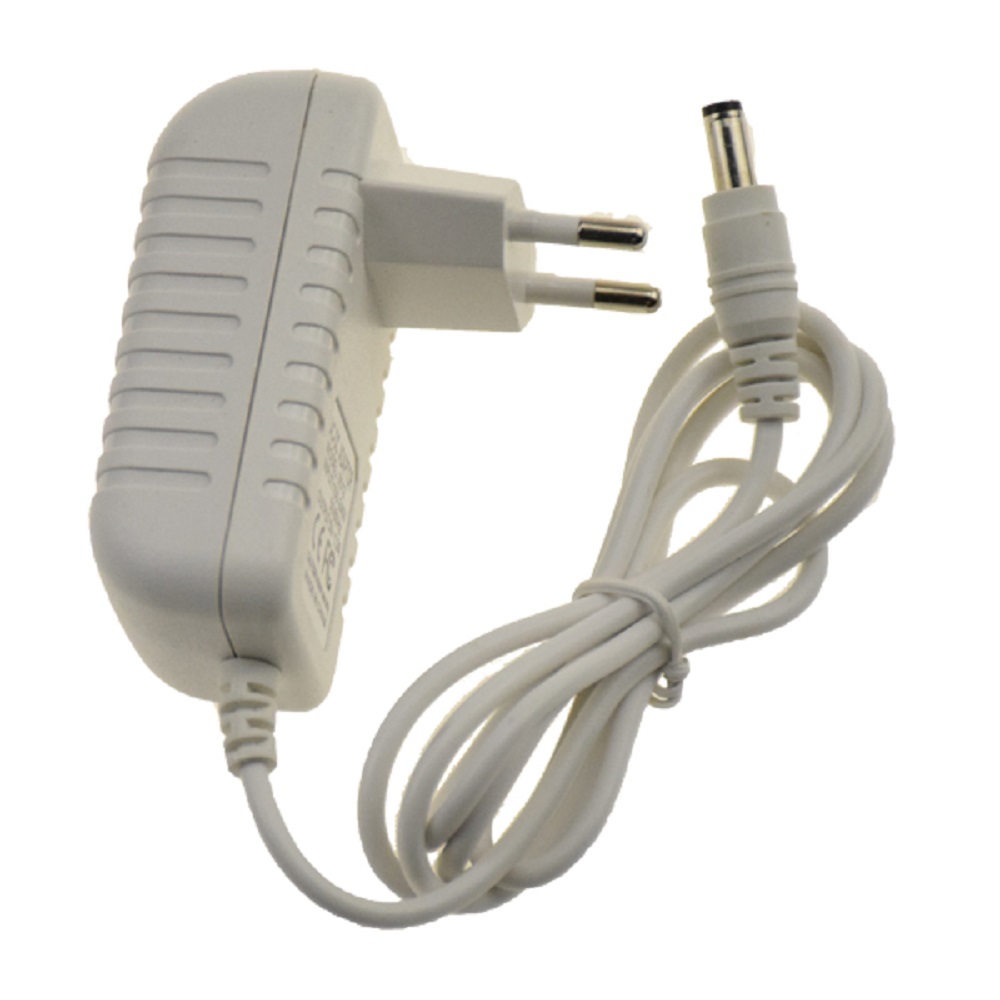
Other Wall Charger
Other Wall Charger,Travel Wall Charger,Phone Wall Charger,Home Wall Charger
Shenzhen Yidashun Technology Co., Ltd. , https://www.ydsadapter.com